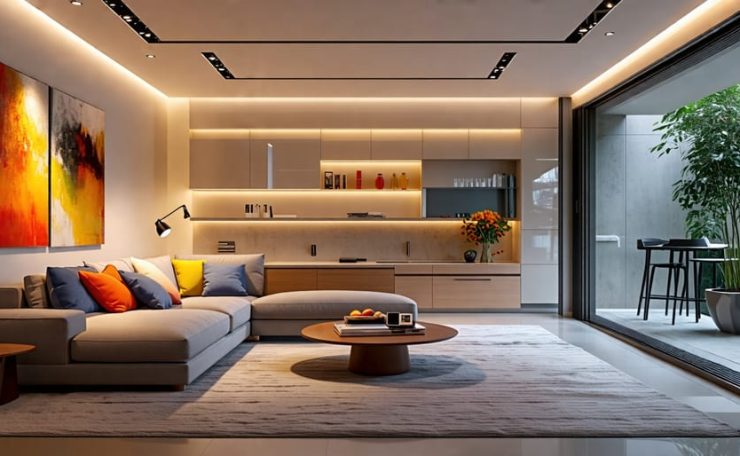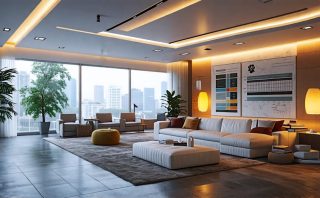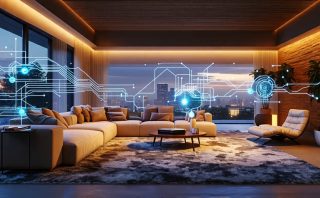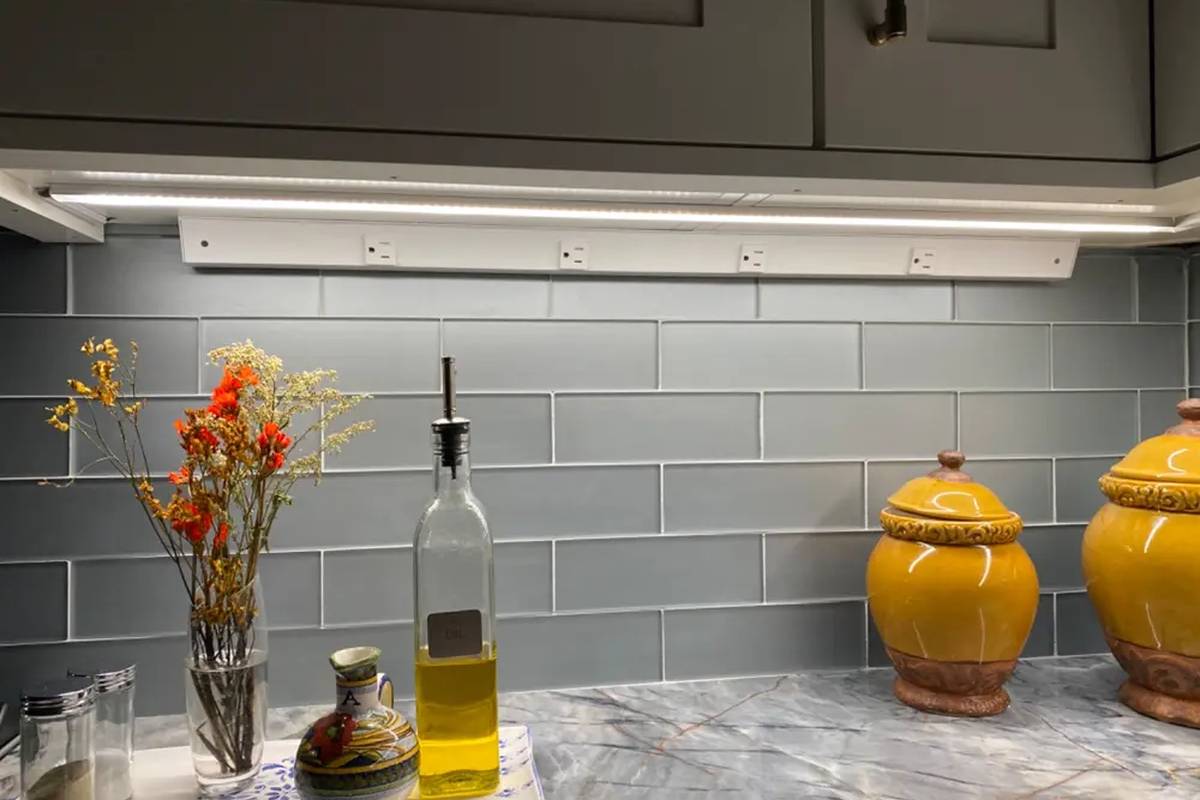Harness the power of integrated smart technologies to revolutionize your life. Imagine a world where your home, office, and car are seamlessly connected, anticipating your needs and automating tasks with intelligent efficiency. From smart lighting that adapts to your mood and activities, to intelligent climate control that optimizes comfort and energy savings, the magic of smart lighting and integrated technologies is transforming how we live, work and play.
Welcome to the era of the smart ecosystem, where advanced sensors, AI, and IoT converge to create personalized, responsive environments that elevate convenience, productivity, and wellbeing to unprecedented heights. As we stand on the cusp of this technological revolution, it’s time to explore the immense potential of integrated smart technologies and embrace a future where our surroundings intuitively adapt to enhance every aspect of our lives. Get ready to experience the power of smart living like never before.
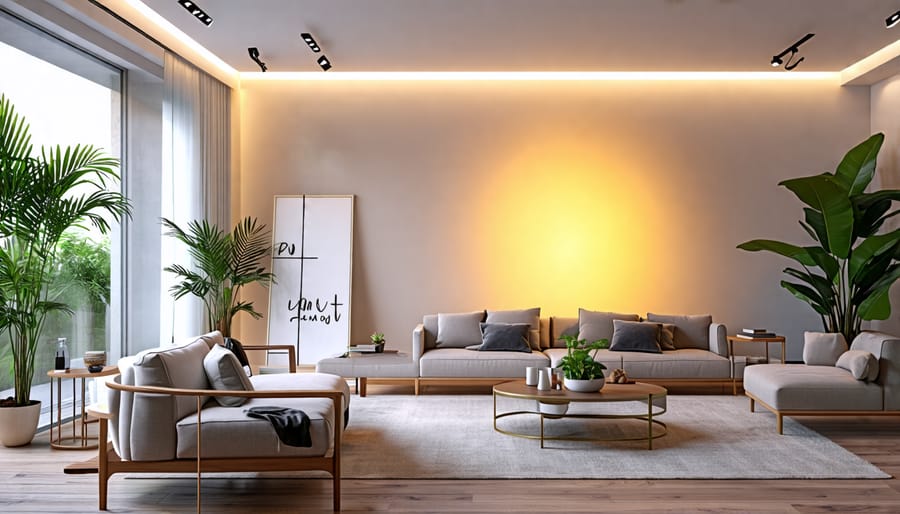
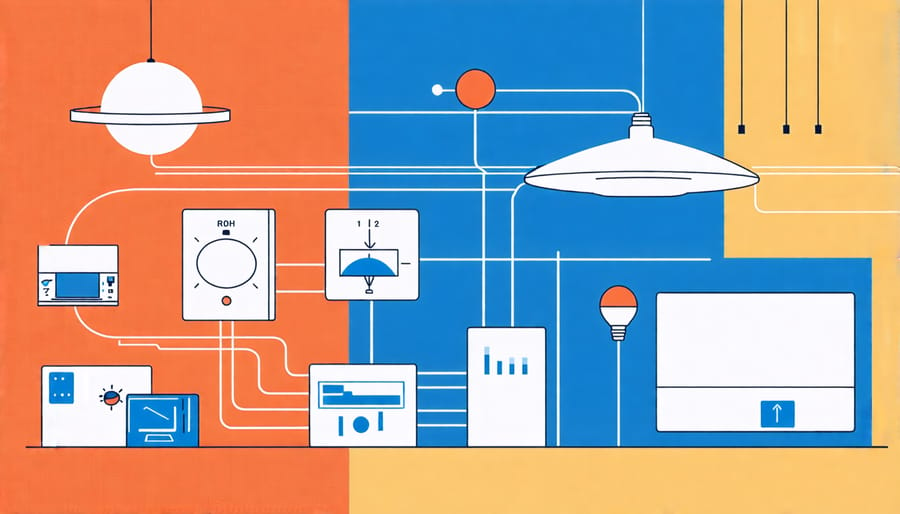
Key Components of a Smart Lighting System
Smart Bulbs and Fixtures
Smart bulbs and fixtures come in various types, each offering unique features and benefits. LED smart bulbs are popular for their energy efficiency, long lifespan, and wide range of colors and temperatures. Smart fixtures, such as recessed lights, pendants, and wall sconces, provide a more integrated and streamlined look. When choosing smart lighting, consider factors like lumens, color rendering index (CRI), and compatibility with your smart home ecosystem. Many smart bulbs and fixtures work with popular platforms like Amazon Alexa, Google Assistant, and Apple HomeKit, allowing seamless control through voice commands or mobile apps. Some advanced features to look for include scheduling, geofencing, and integration with other smart devices like motion sensors and cameras. By carefully selecting the right smart bulbs and fixtures for your space, you can create a truly personalized and responsive lighting experience that enhances both functionality and ambiance.
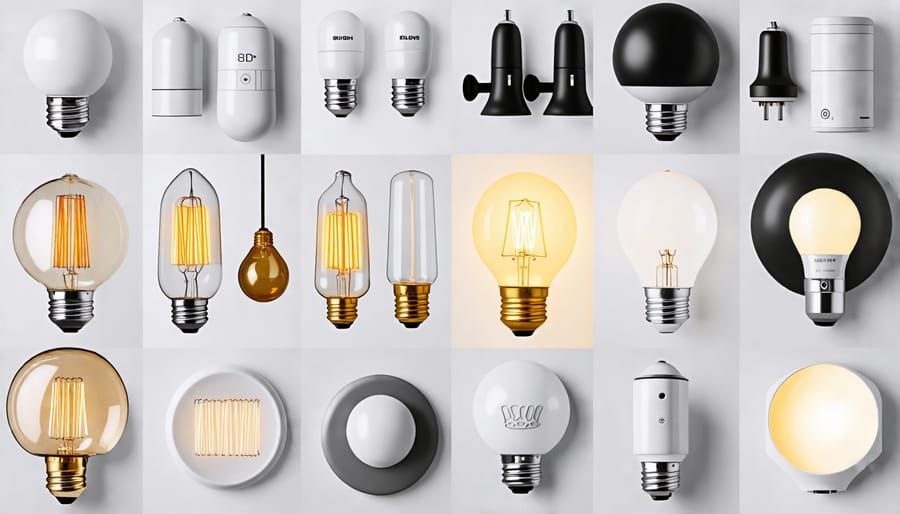
Sensors and Automation
Integrated smart lighting systems rely on advanced sensors to automate lighting behaviors and create dynamic scenes. Motion sensors detect movement within a space, triggering lights to turn on when someone enters and off when the area is vacant. Light sensors monitor ambient light levels, adjusting the brightness of fixtures to maintain optimal illumination while conserving energy. Presence detection sensors use infrared technology to identify when people are in a room, even if they are not moving, ensuring lights remain on as long as the space is occupied. By combining these sensors with programmable settings, smart lighting systems can automatically adapt to the needs of the space, providing convenience, comfort, and energy efficiency. Homeowners and designers can create customized lighting scenes that respond to occupancy, time of day, or specific activities, elevating the functionality and ambiance of any interior.
Designing with Integrated Smart Lighting
Setting the Mood
Smart lighting is a powerful tool for setting the mood and creating the perfect ambiance in any space. With integrated smart technologies, you can easily control the color, brightness, and warmth of your lighting to suit different activities and times of day. Imagine starting your morning with a gentle, gradual increase in brightness that mimics the natural sunrise, helping you wake up feeling refreshed and energized. As you go about your day, you can adjust the lighting to enhance focus and productivity in your home office or create a cozy, relaxing atmosphere in your living room for unwinding in the evening.
For special occasions or entertaining, smart lighting allows you to set the scene with just a few taps on your smartphone or voice commands. Create a festive mood with vibrant colors for a birthday celebration, or set a romantic tone with soft, warm lighting for an intimate dinner. With the ability to save and recall custom lighting scenes, you can instantly transform your space to suit any mood or activity.
Smart lighting also offers the convenience of automated schedules, so you can have your lights adjust automatically throughout the day based on your preferences and routines. Never again worry about coming home to a dark house or leaving the lights on when you’re away. With integrated smart technologies, you have complete control over your lighting, making it effortless to create the perfect ambiance in your home.
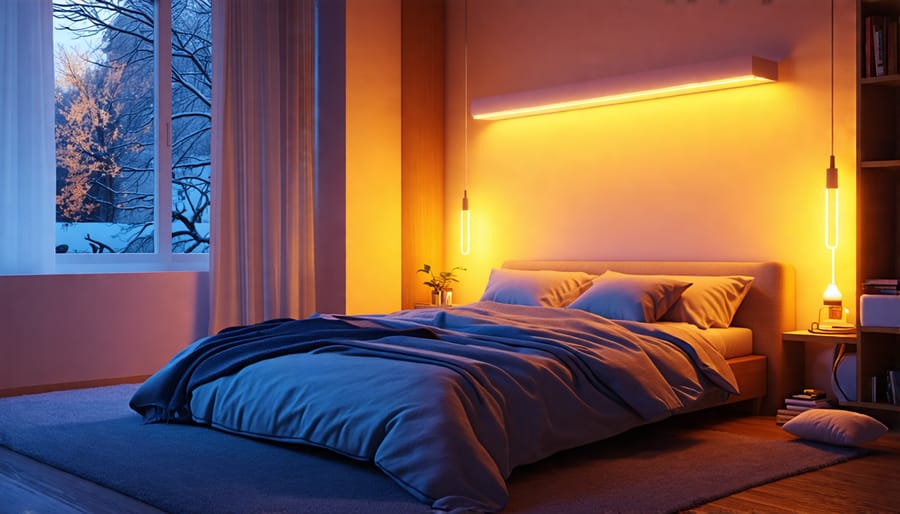
Enhancing Functionality
Smart lighting can greatly enhance the functionality and ambiance of various spaces in your home. In a home office, adjustable color temperature and brightness allow you to create the perfect lighting for focused work or relaxed brainstorming sessions. Automated schedules can help maintain a consistent work-life balance by signaling when it’s time to start and end your workday.
In the kitchen, under-cabinet and overhead smart lights provide bright, even illumination for meal prep and cooking. Voice-activated controls make it easy to adjust lighting hands-free while handling food or dishes. For entertaining, pre-set scenes can instantly transform your kitchen into a warm, inviting space for guests.
Bathrooms benefit from smart lighting’s adaptability and convenience. Soft, warm light creates a spa-like atmosphere for relaxation, while bright, cool tones energize you in the morning. Motion sensors ensure safety and energy efficiency by automatically turning lights on and off as needed. With smart mirrors and vanity lights, you can perfect your look in optimally lit conditions every time.
By tailoring your smart lighting to each room’s specific needs, you’ll elevate your home’s functionality and create spaces that adapt effortlessly to your daily routines and moods.

Getting Started with Smart Lighting
Getting started with smart lighting involves careful planning and implementation to achieve the desired ambiance and functionality in your space. Begin by consulting with a professional lighting designer who can assess your needs, preferences, and the unique characteristics of your environment. They will provide expert guidance on selecting the right smart lighting products, placement strategies, and control options to create a cohesive and efficient system.
When choosing smart lighting products, consider factors such as compatibility with your existing infrastructure, energy efficiency, color temperature range, and dimming capabilities. Look for reputable brands that offer reliable performance, easy integration, and robust security features. Many smart lighting systems can be seamlessly integrated with other connected devices and platforms, allowing for centralized control and automation.
Once you have your smart lighting products, work with your lighting designer or a qualified installer to set up the system according to your plans. This typically involves connecting the light fixtures or bulbs to a central hub or gateway, configuring the control settings, and programming any desired scenes or schedules. Most smart lighting systems can be controlled through a dedicated mobile app, voice commands, or even gestures, providing intuitive and hands-free operation.
As you set up your smart lighting system, consider creating different lighting scenes for various activities, such as relaxing, working, or entertaining. These scenes can be easily activated with a single command, instantly transforming the ambiance of your space. Additionally, take advantage of scheduling features to automatically adjust the lighting based on time of day, occupancy, or external factors like sunrise and sunset.
Regular maintenance and updates are crucial to ensure the optimal performance and security of your smart lighting system. Keep your firmware and control apps up to date, and promptly address any issues or malfunctions. With proper planning, implementation, and ongoing management, a smart lighting system can revolutionize the way you experience and interact with light in your space.

